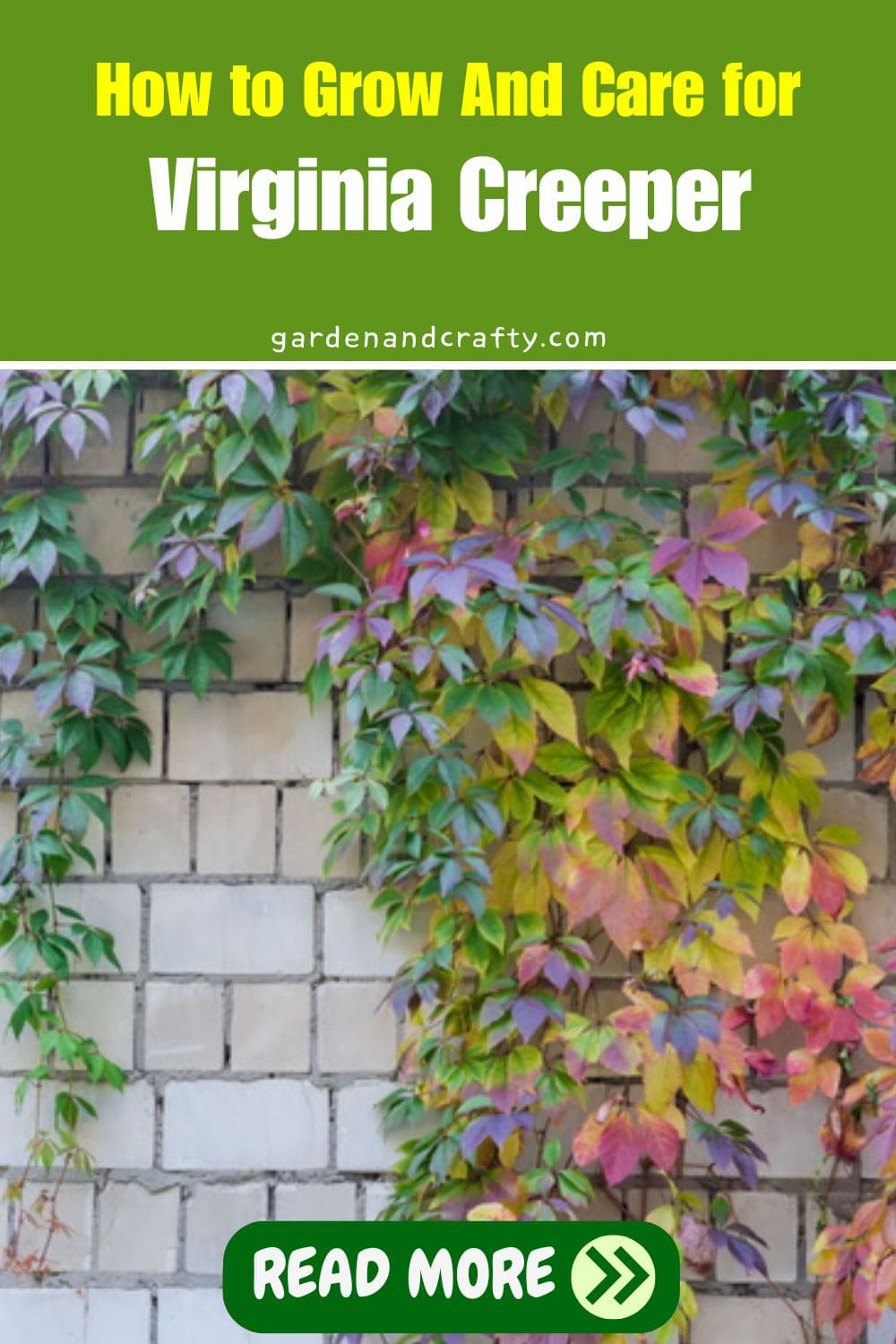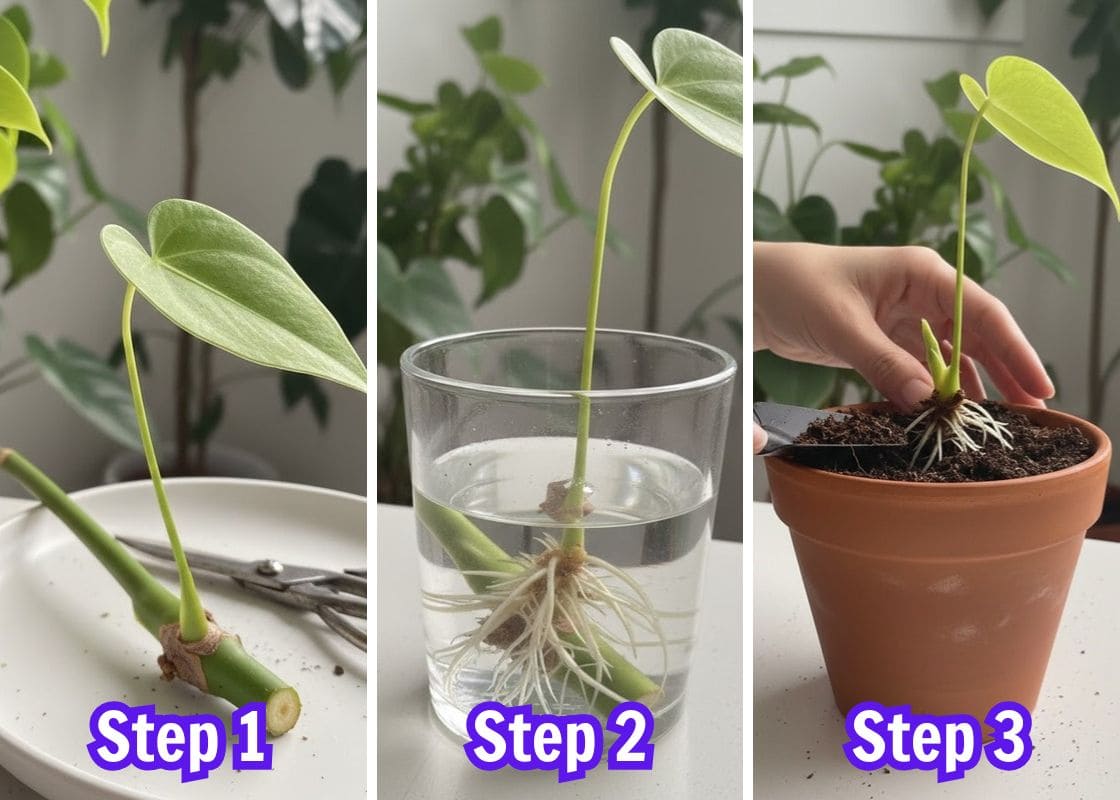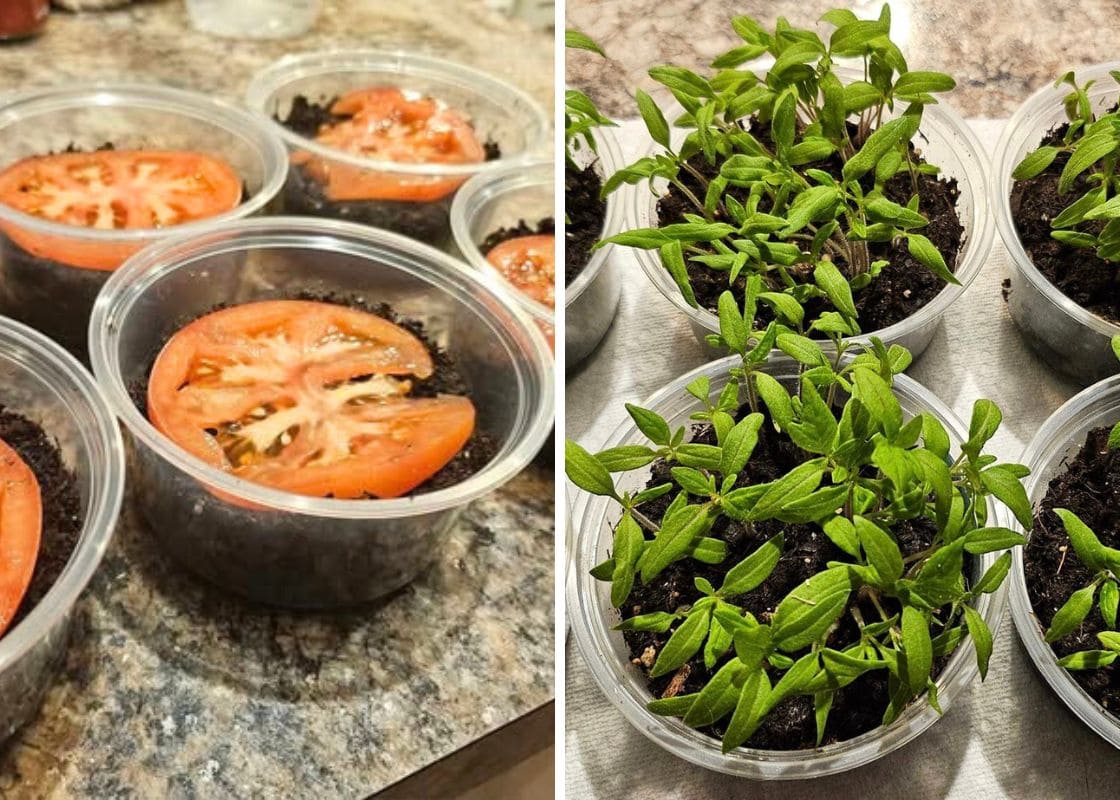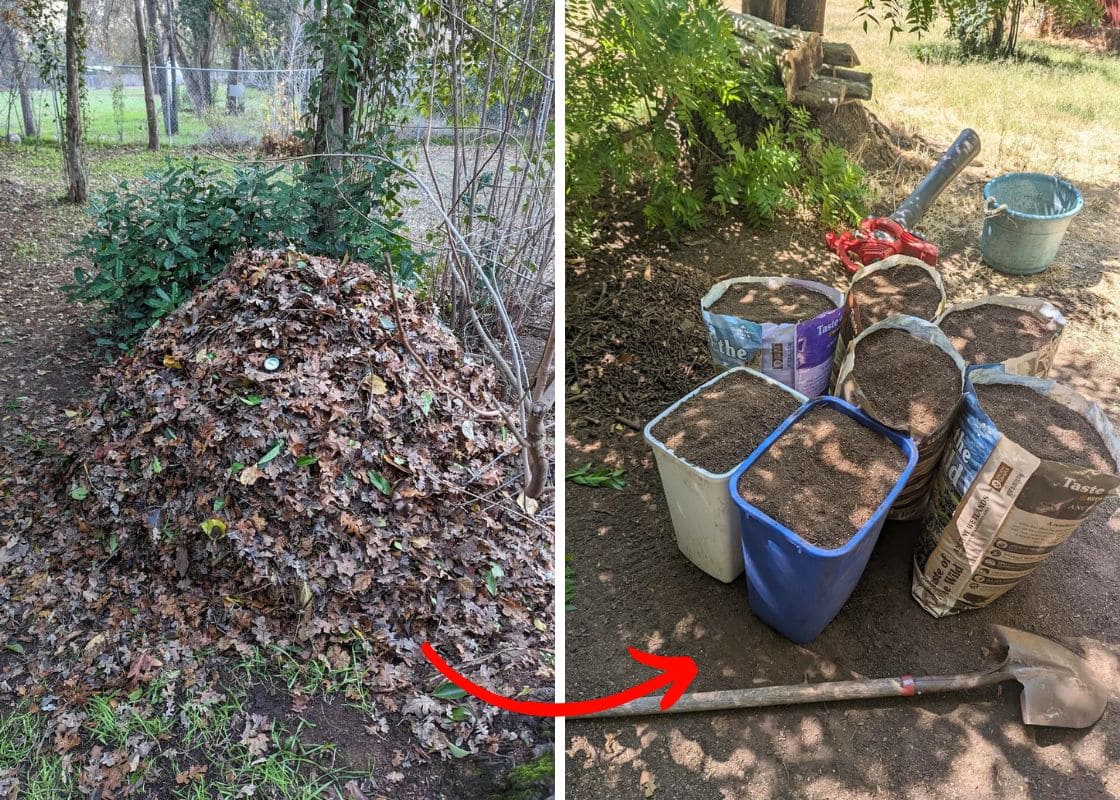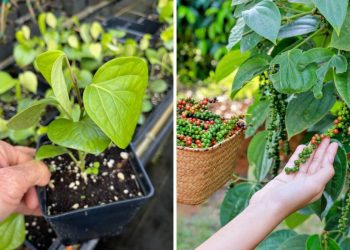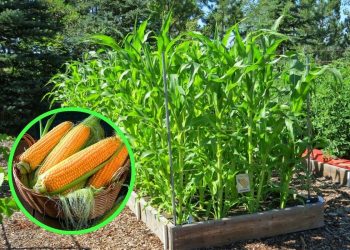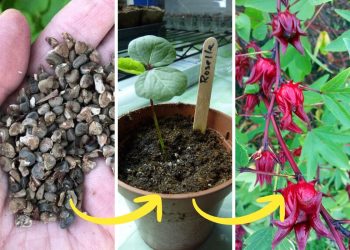Have you ever gazed at a bare wall in your garden and wished for a natural touch to bring it to life? Virginia creeper is your answer.
This vigorous climbing vine can transform any dull outdoor space into a lush, green paradise with its dynamic foliage and turning a breathtaking red in the fall.
In addition, it’s remarkably easy to grow and promises to become the standout feature of your garden.
Summary:
- Virginia creeper is an easy-to-grow perennial vine that adds lush greenery and vibrant red fall color to gardens.
- It thrives in various soil types and light conditions, from full sun to partial shade, and is drought-tolerant once established.
- Regular pruning, proper support, and occasional fertilization ensure healthy growth and control invasiveness.
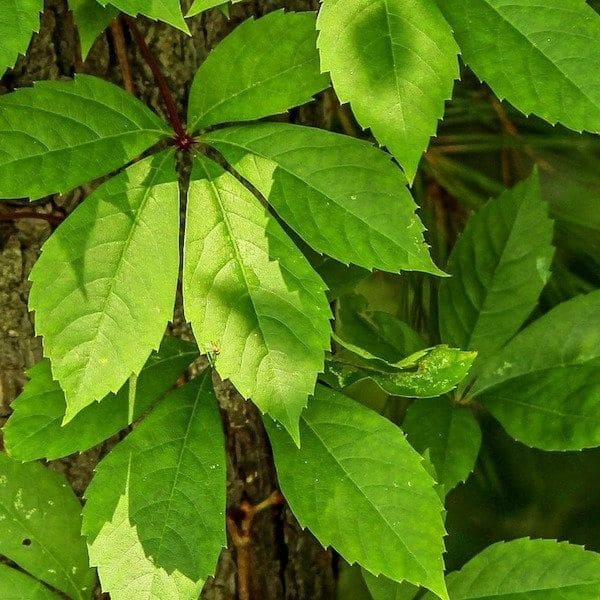
| Scientific name | Parthenocissus quinquefolia |
| Common name | Virginia creeper, Victoria creeper, five-leaved ivy, five-finger, woodbine |
| Plant type | Perennial |
| Mature size | Up to 98 feet |
| Flower | Inconspicuous, greenish-white |
| Fruit | Small, dark blue to black berries |
| Sun requirement | Full sun to partial shade |
| Soil type | Various soil types |
| Native range | Eastern and Central North America |
| Toxicity | Toxic to human |
Propagation
You can propagate virginia creeper by cutting, but it seems too popular. Now you can try layering which allows you to grow new plants directly in the ground.
Firstly, you only need to select a healthy, low-growing stem and gently bend it to the ground.
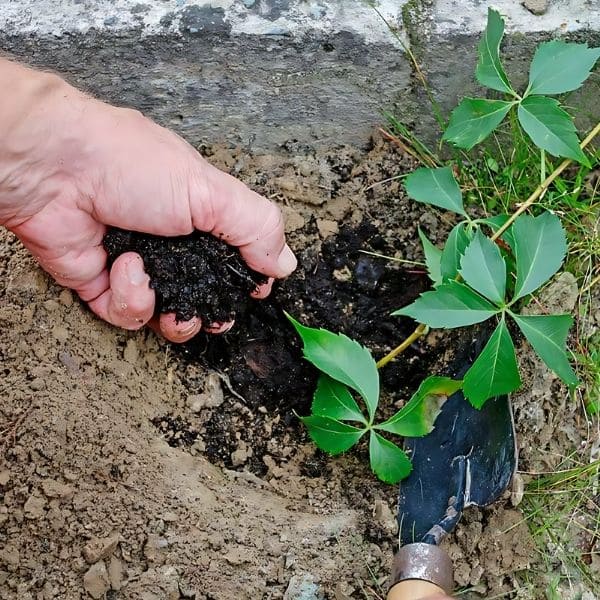
Next, cover a section of the stem with soil, leaving the tip exposed. I usually secure it with a small stone or garden pin to keep it in place.
Within a few months, roots will start to form at the buried section, then you can cut the new plant from the parent vine and transplant it wherever you like.
Growing Virginia Creeper
Preparation
If you are wondering why types of virginia creeper to plant, here is suggestion:
- Parthenocissus quinquefolia: known for its five-leaflet clusters and stunning red fall color. It’s perfect for covering walls and fences with a lush, green blanket.
- Parthenocissus quinquefolia ‘Engelmannii’: This variety features smaller leaves and a more compact growth habit. It’s ideal for smaller spaces.
- Parthenocissus inserta: Also known as False Virginia Creeper, it has similar foliage but doesn’t have adhesive discs, making it less aggressive in its climbing.
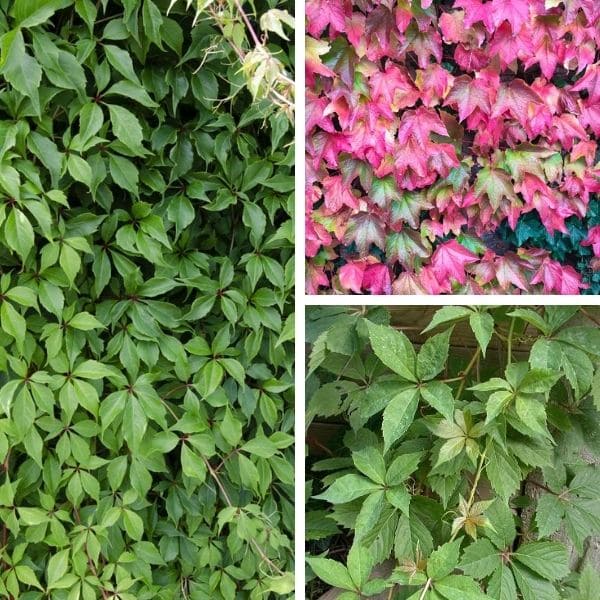
In addition, you need to select a sunny or partially shaded spot in your garden. I always begin by clearing the area of any weeds and loosening the soil to ensure good root penetration.
It’s also helpful to soak the seeds in water for 24 hours before planting to improve germination.
Growing Virginia Creeper
Bury the seeds about 3/8 inch deep and keep them to no more than 10 per square foot to give them room to grow. Then you need to keep the soil consistently moist but not waterlogged.
In my experience, be patient as it can take a few weeks for the seeds to sprout. Once they do, you’ll see small shoots emerge and they will soon begin to thrive and spread.
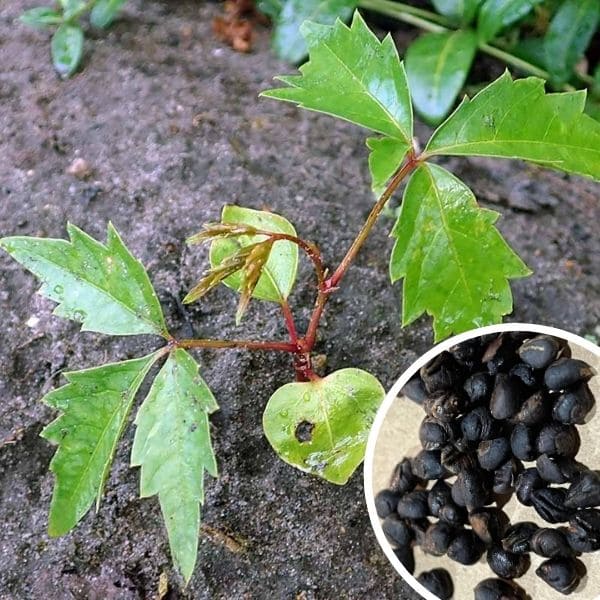
Caring for Virginia Creeper
Here are main requirement when caring for virginia creeper
- Provide a place with full sun or partial shade.
- Keep soil moist, especially when the plant is young.
- Prune in late winter or early spring to control growth and encourage new shoots.
- Provide a trellis, fence, or wall for the vine to climb.
- Annual application of balanced fertilizer in early spring boosts growth.
Light
Virginia Creeper is incredibly adaptable, I’ve planted it in both sunny and partially shaded spots in my garden, and it thrives in both.
However, I’ve noticed that the foliage displays the most vibrant colors in the fall when the plant receives plenty of sunlight.
If you have a sunny wall or fence, it’s the perfect place for this vine. But don’t worry if your garden has more shade; virginia creeper will still grow well and add lush greenery to those areas.
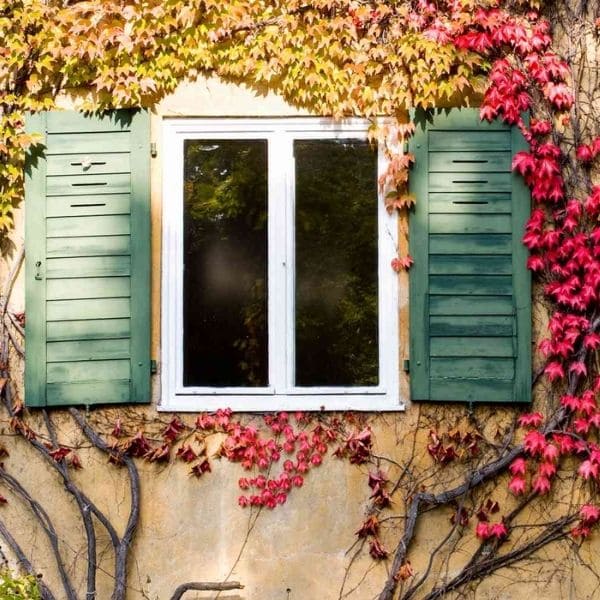
Soil
Virginia creeper isn’t fussy about soil, which makes it a joy to grow. I’ve planted it in various soil types in my garden from sandy to clay.
However, it thrives best in well-drained soil. To give your virginia creeper a great start, you can mix in some compost to enrich the soil with nutrients and improve drainage.
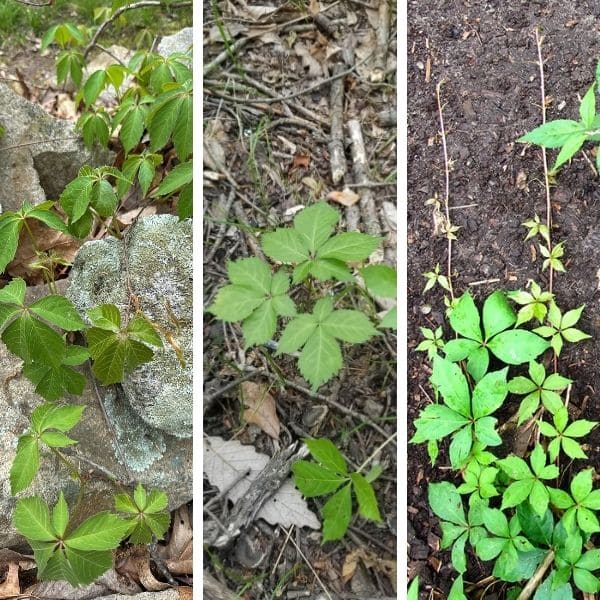
Water
During early growth stages, you should keep the soil consistently moist to help the young plants establish strong roots.
Once the vine matures, it becomes quite drought-tolerant, but I still water it regularly during dry spells to keep it lush and vibrant.
Overwatering can lead to root rot, so it’s important to let the soil dry out slightly between waterings.
Temperature and Humidity
In my garden, virginia creeper has thrived through hot summers and cold winters without much fuss. It can tolerate many temperatures generally thriving in USDA hardiness zones 3 to 9.
This means it can handle temperatures as low as -40°F in winter and up to 90°F or higher in summer.
Humidity isn’t a major concern either; I’ve seen it grow well in both dry and humid conditions. However, during extreme heat, providing some extra water helps maintain its lush appearance.
Fertilizer
Virginia creeper doesn’t need a lot of feeding to thrive. Too much fertilizer can actually lead to excessive leaf growth with fewer vibrant colors in the fall.
A light, annual feeding is sufficient to keep your virginia creeper healthy and vigorous.
Pruning
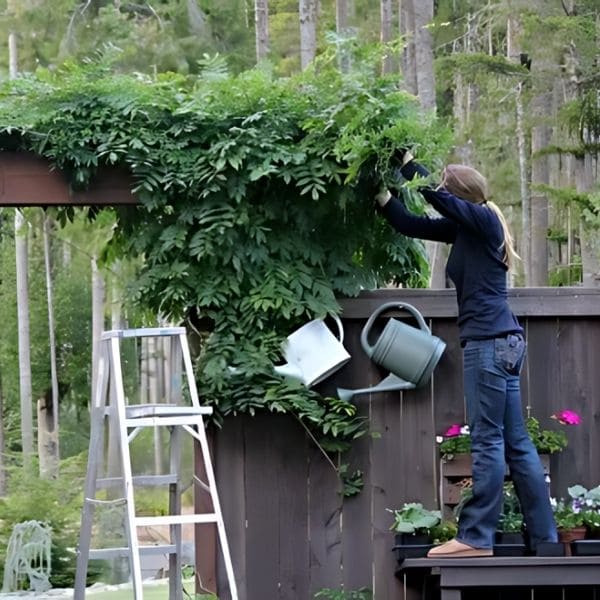
In late winter or early spring, you need to prune overgrown or unruly vines to maintain the shape and encourage healthy new growth.
Additionally, it’s important to remove the vine’s green flowers, which later turn into ball-like fruits.
These fruits are highly toxic to humans, so I always make sure to cut them off as soon as they appear.
Staking
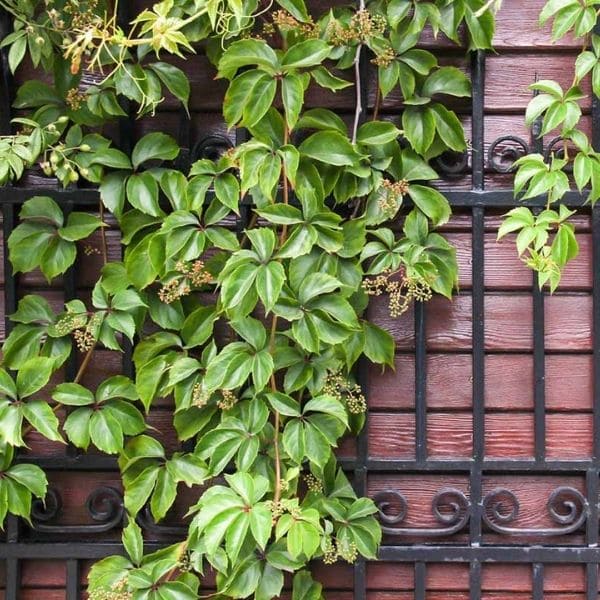
While letting it climb walls and roofs might seem convenient, the vine’s adhesive tendrils can latch onto surfaces, causing damage to paint, bricks, and even shingles over time.
Moreover, allowing virginia creeper to grow on roofs can lead to clogging gutters and downspouts with fallen leaves and debris causing water damage and other issues.
Instead, you should make a trellis using weather-resistant materials like cedar or metal. Aim for a size of at least 6-8 feet tall and 3-4 feet wide to give the vine ample space to climb.
Pests and Diseases
Virginia creeper is generally resistant to pests and diseases, but it’s always good to keep an eye out for aphids and spider mites on the leaves.
These pests can usually be managed with a strong spray of water or a homemade insecticidal soap.
In addition, fungal diseases like powdery mildew can occur in humid conditions. Therefore, ensuring good air circulation around the plant helps prevent this.

Common Problems
Invasiveness of Virginia Creeper
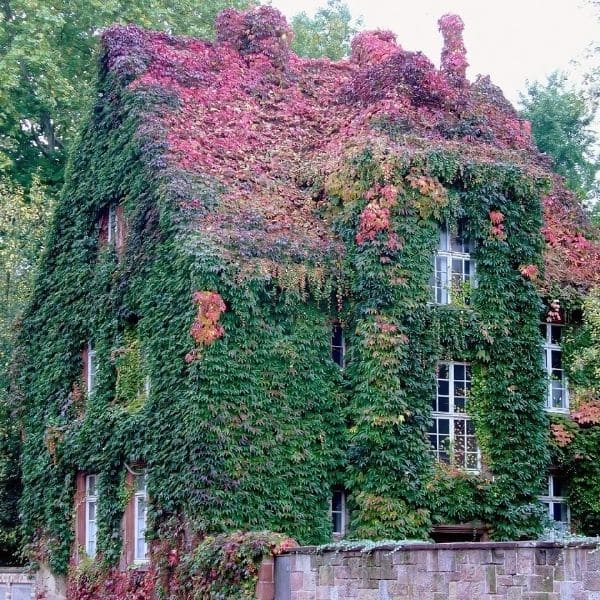
Virginia creeper quickly spread, climbing over fences, trees, and even other plants. If left unchecked, it can outcompete and overshadow other plants.
Therefore, it’s not simple to cut back overreaching vines, sometimes we have to apply a glyphosate-based herbicide and target only the virginia creeper to avoid harming nearby plants.
Misunderstanding of Virginia Creeper and Poison Ivy
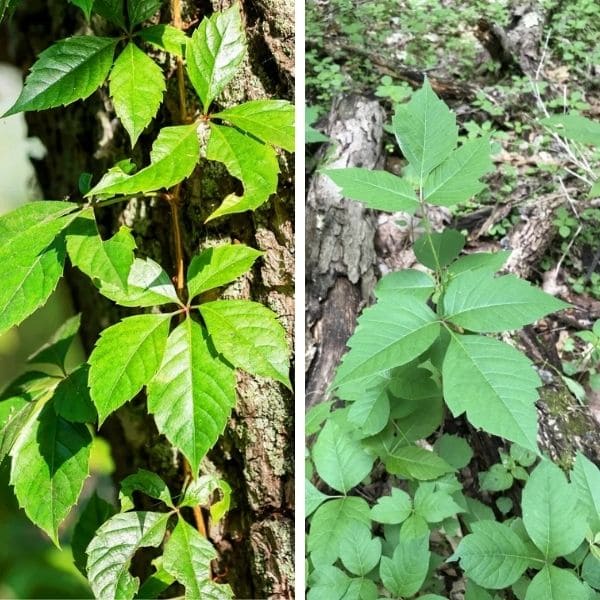
Interestingly, children learned a rhyme to distinguish virginia creeper: “Leaves of three, let it be; Leaves of five, let it thrive.”
Although both plants can be found in similar environments, in the fall, virginia creeper’s leaves turn a vibrant red, while poison ivy leaves usually turn yellow or orange.
Additionally, virginia creeper produces small, dark blue berries, unlike the white berries of poison ivy.
Specially, poison ivy can cause a severe rash due to the urushiol oil in its leaves, so you mustn’t confuse virginia creeper with poison ivy.
FAQs
Can virginia creeper be grown in pots?
Yes. You need to choose a large container with good drainage to accommodate its extensive root system and provide a sturdy trellis or support for the vine to climb.
Do vines need roots?
Yes, vines need roots to absorb water and nutrients from the soil. The roots anchor the plant and provide the necessary support for the vine’s growth.
How long do vines last?
With proper care, including regular pruning and adequate support, virginia creeper can thrive for decades.
